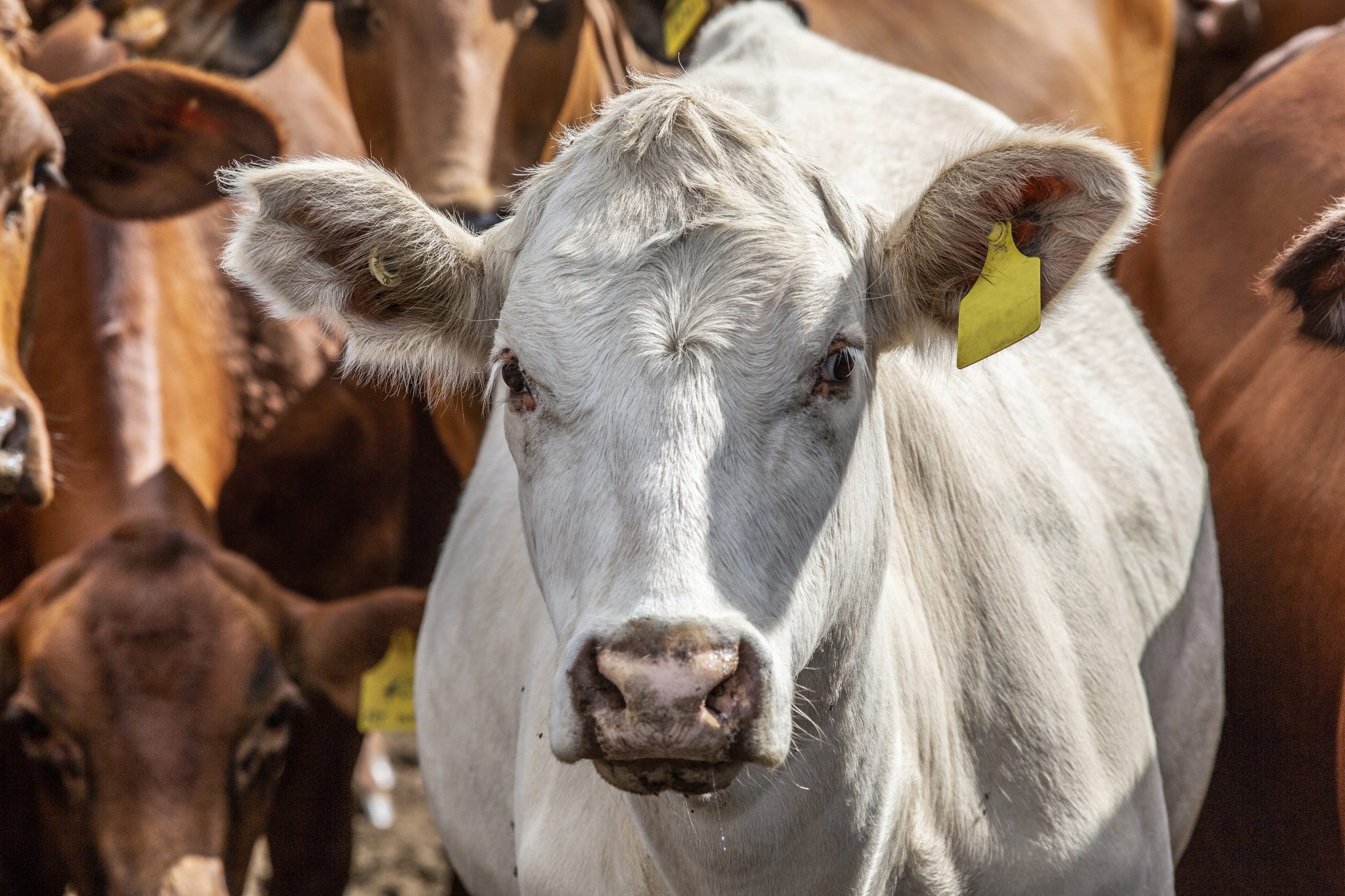How Much Cottonseed Hulls Do I Feed My Heifers
Cotton byproducts can offer a low-cost alternative protein and roughage source in beef cattle diets. Learn the pros and cons of different byproducts.
What is a cotton byproduct?
Cotton byproducts are secondary products derived from cotton production or what remains after the cotton fiber, cottonseed oil, or other primary products have been harvested or extracted. Common cotton byproducts include cottonseed meal (CSM), cottonseed hulls, gin trash, and cotton stalk residue. All of these byproducts can be utilized as feed supplements or even primary feed sources for beef cattle throughout various stages of production. Check pesticide product labels for restrictions about feeding residual cotton products and byproducts.
Cottonseed Meal
Cottonseed meal is derived from the extraction of cottonseed oil and is typically utilized as a protein supplement for beef cattle. Cottonseed meal varies in crude protein (CP) remains depending on the oil extraction method. Solvent-extracted cottonseed meal provides only slightly higher (45 percent CP) than mechanically extracted cottonseed meal (44 percent CP). Compared with soybean meal, cottonseed meal is less expensive, comparable in protein degradability, and less concentrated in crude protein. Cottonseed meal is also a good source of phosphorus (1.2 percent on a dry matter basis). It is commonly free-choice fed to mature cows when mixed with salt at a 2:1 (CSM:salt) ratio, which limits intake to approximately 2 pounds per day. Cottonseed meal is also fed mixed with other feedstuffs to increase protein concentration and intake.
Loose Gin Trash
Loose gin trash consists of unusable residue remaining from the cotton ginning process and is an inexpensive, or often free, roughage source that can be utilized by beef cattle. The only costs typically associated with gin trash are transportation and storage, both of which can be affected by different ginning processes and low bulk density of the residue. Wetting gin trash to reduce dust increases weight, decreases storage life and palatability, and increases the likelihood of molding. Nutritional value varies greatly in gin trash depending on the level of seed contribution. In general, gin trash contains 7 to 10 percent CP and 45 to 50 percent total digestible nutrients (TDN) on a dry matter basis. A feed analysis should be performed to accurately determine the nutritional value of gin trash and subsequent feed supplementation rates. Energy supplementation is likely needed for cattle to efficiently utilize gin trash. When feeding gin trash, producers must allow an adaptation period. Methods for feeding gin trash include mechanically distributing with a tractor or skid steer or obtaining the gin trash in modules and regulating access using an electric fence.
Baled Gin Trash
Baled gin trash byproducts are generally similar to gin trash but collectively are slightly greater in feed value for beef cattle. When the material is baled, some of the finer material is removed by further processing, which increases the relative contribution from lint, seed, and hulled material. Bales are generally compressed to make a dense product that is easier to transport in smaller amounts than loose gin trash and weigh between 500 and 650 pounds depending on the gin. This product may be more accessible as a feed resource to smaller-scale beef producers.
Cottonseed Hulls
Cottonseed hulls are another byproduct of cottonseed oil extraction. Cottonseed hulls are typically used as a supplemental roughage source for low-roughage diets such as those in feedlots, an intake limiter in free- choice feeders, or in rations at low-inclusion levels to improve overall feed texture and palatability. They are generally included in diets at rates of ≤ 25 percent. Despite being highly palatable to cattle, low bulk density and the associated high transportation costs limit the use of cottonseed hulls to cattle producers located near processing plants. Because of the high costs associated with transportation and low protein and energy concentration, cottonseed hulls are often not economically feasible to use in large amounts for mature cows. Cottonseed hulls generally contain 4 to 5 percent CP and 42 to 45% TDN on a dry matter basis. They are a highly effective source of roughage in high-grain diets because of high neutral detergent fiber concentration.
Cotton Stalk Residue
Following cotton harvest, stalk material and some lint, cottonseed, leaves, and burrs remain in the field. This material may provide a roughage source for beef cattle during the fall months, and it can be grazed. A general rule of thumb is that 1 acre will maintain a cow for 30 days, although grazing days will vary greatly depending on crop yield and harvest conditions. This system fits well for dry cows with relatively low nutrient requirements. Lactating cows will need supplemental energy and protein if grazing on cotton stalk residue.
Summary
Cotton byproducts can be a low-cost alternative protein and roughage source. Cottonseed meal can be used to replace soybean meal and decrease the cost of protein supplementation. Gin trash can be effectively utilized as a roughage source in beef diets and can replace hay with adequate energy supplementation.
Cottonseed hulls are a palatable fiber source that can be used as the sole roughage source for feedlot cattle or as supplemental fiber for mature cows. The main issue with most byproducts is shipping and storage costs due to low bulk density. This can limit use to producers located near processing plants.
Cotton stalk residue is an underutilized roughage resource that can be grazed by mature cows in the fall months and may help extend the grazing season. Overall, the use of cotton byproducts can be beneficial if producers are able to obtain, utilize, and manage the byproducts efficiently.
 J. Luke Jacobs, Graduate Research Assistant; Kim Mullenix, Extension Beef Specialist, Associate Professor, Animal Sciences and Forages; Steve Brown, Extension Cotton Specialist, Assistant Professor, Crop, Soil, and Environmental Sciences, all with Auburn University; and Jenny Koebernick, Cotton Breeder
J. Luke Jacobs, Graduate Research Assistant; Kim Mullenix, Extension Beef Specialist, Associate Professor, Animal Sciences and Forages; Steve Brown, Extension Cotton Specialist, Assistant Professor, Crop, Soil, and Environmental Sciences, all with Auburn University; and Jenny Koebernick, Cotton Breeder
Reviewed April 2022, Cotton Byproduct Use in Beef Cattle Diets, ANR-2636
Did you find this helpful?
Source: https://www.aces.edu/blog/topics/beef/cotton-byproduct-use-in-beef-cattle-diets/

0 Response to "How Much Cottonseed Hulls Do I Feed My Heifers"
Post a Comment